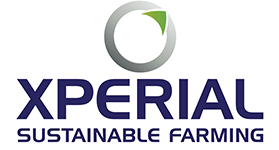Chicken Anemia Virus (CAV) is a worldwide known disease that affects young birds between 12-28 days old. It is caused by Circo Virus which has an 8-10 day incubation period. CAV causes a condition in domestic fowl known as blue-wing disease, infectious anaemia, haemorrhagic syndrome or anaemia dermatitis syndrome. It is seen mostly in broilers.
Infection causes anaemia, bone marrow atrophy, and severe immunosuppression in poultry as the virus affects the production of red blood cells, white blood cells and platelets. Clinical signs are predominantly found in young chicks due to vertical transmission from the breeder hens whose maternal antibodies have not yet formed following exposure. Clinical signs include:
- Weakness/ lethargy
- Weight loss/ anorexia
- Pale comb and membranes
- Stunting
- Dullness and depression
- Bluish discolouration of the wing can also occur (blue wing disease)
- Sudden death, mortality is usually 5 – 10%, but up to 60% has been recorded.
Subclinical infection my cause reduced growth rates and other health problems.
Post mortem examination shows anaemia, subcutaneous and intramuscular haemorrhages and atrophy of the thymus and other lymphoid tissues. Skin overlying subcutaneous haemorrhages, particularly on the wings, may turn blue and break, releasing bloody exudate. Gangrenous dermatitis may result from secondary bacterial skin infection.
Vertical spread of the disease can be controlled by the vaccination of breeding hens with the appropriate vaccines which controls anaemia in the birds; however, immunosuppression may still be evident in the progeny of vaccinated birds. Chicks derive immunity from immune parent stock.
Exposure of pullets to infected litter before egg production will produce protective maternal immunity in the progeny, but risks spreading other diseases to the birds. Culling of infected birds is normally performed in infected commercial flocks. Appropriate hygiene and biosecurity measures should be employed to control the disease.
CAV is extremely resistant to high temperatures and extremes of pH. It is inactivated by formalin fumigation if this is properly carried out.
Subclinical losses in broilers may be controlled by use of live attenuated vaccines in the broilers or inactivated vaccines in the breeders, with subsequent prolongation of the period of protection provided by maternal antibodies.

